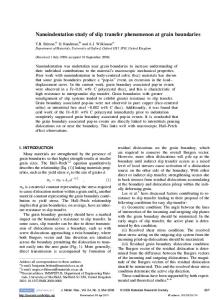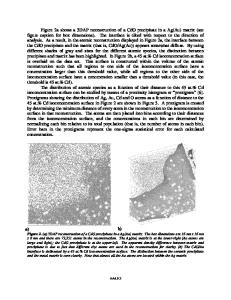Ab-Initio Study of the Local Bonding at Metal-Ceramic Heterophase Boundaries
- PDF / 506,259 Bytes
- 6 Pages / 420.48 x 639 pts Page_size
- 19 Downloads / 319 Views
on top of 0 atoms of a close-packed AI/O(001) plane of spinel. The other possible (001) termination plane of spinel contains sparsely packed Mg cations and was observed to be energetically less favored in a previous density functional study [2]. Here, the basic features are summarized and the consequences for bonding at the metal-ceramic interface will be discussed below. For Ag no distinct, unique translation state was determined both in theory and experiment, because only slight polarizations of the Ag film occur, and, moreover, the formation of thermodynamically more stable (111) Ag islands is observed experimentally [1]. Therefore, the weakly bonding system Ag/MgAl 2 0 4 is a suitable candidate for a study of enhancement effects. Given the results for the pure M/MgA120 4 systems the natural choice for a bonding interlayer between Ag and spinel is an Al monolayer. In addition to this model a Ti interlayer was studied [4], because Ti is frequently used for this purpose in industrial applications. Due to the slightly larger atomic radius of Ti compared to Ag, compressive elastic stress is acting on a Ti interlayer. This effect will be studied by stepwise exchange of Ag atoms by Ti atoms at the interface and implications for the bonding enhancement and the electronic structure at the interface are discussed. INTERACTION MECHANISMS The adhesion at metal-ceramic interfaces can be enhanced significantly by introducing a thin layer of an early transition metal between metal and ceramic. This phenomenon is utilized for instance in semiconductor industry, when applying a copper metallisation layer to Si0 2 via a Cr interlayer [5] or to polycrystalline A12 0 3 ceramic carrier materials via Ti layers. The latter systems, 43 Mat. Res. Soc. Symp. Proc. Vol. 586 © 2000 Materials Research Society
the weakly bonding Cu(lll)/a-A2 0 3 (0001) and the strongly adhesive Cu/Ti/a-A12 0 3 , have been well characterized with respect to their mechanical and electrical properties, both by theory [6] and experiment [7]. Indications for a partial oxidation of the 0 ions at the interface were obtained in situ during the preparation and treated semi-quantitatively later by ex situ ATEM investigations [6]. On the other hand, earlier density-functional studies of thin (0001)-Ti films show a surface-specific electronic state together with core-level shifts, which may as well account for the changes of the peak positions detected in the EELS experiment [8]. However, the Cu(111)/c-A120 3 (0001) interface is observed to be incoherent. Apart from the large unit cells required for thorough theoretical investigations, the lattice mismatch of this model system is a serious drawback, because it inhibits the straightforward distinction between electronic and geometric as well as elastic or plastic effects and their influence on the interface stability. Based on these and other previous studies on non-reactive and reactive wetting at heterophase boundaries, the following extremal cases for the enhanced interaction in the metal/interlayer/ceramic systems
Data Loading...











